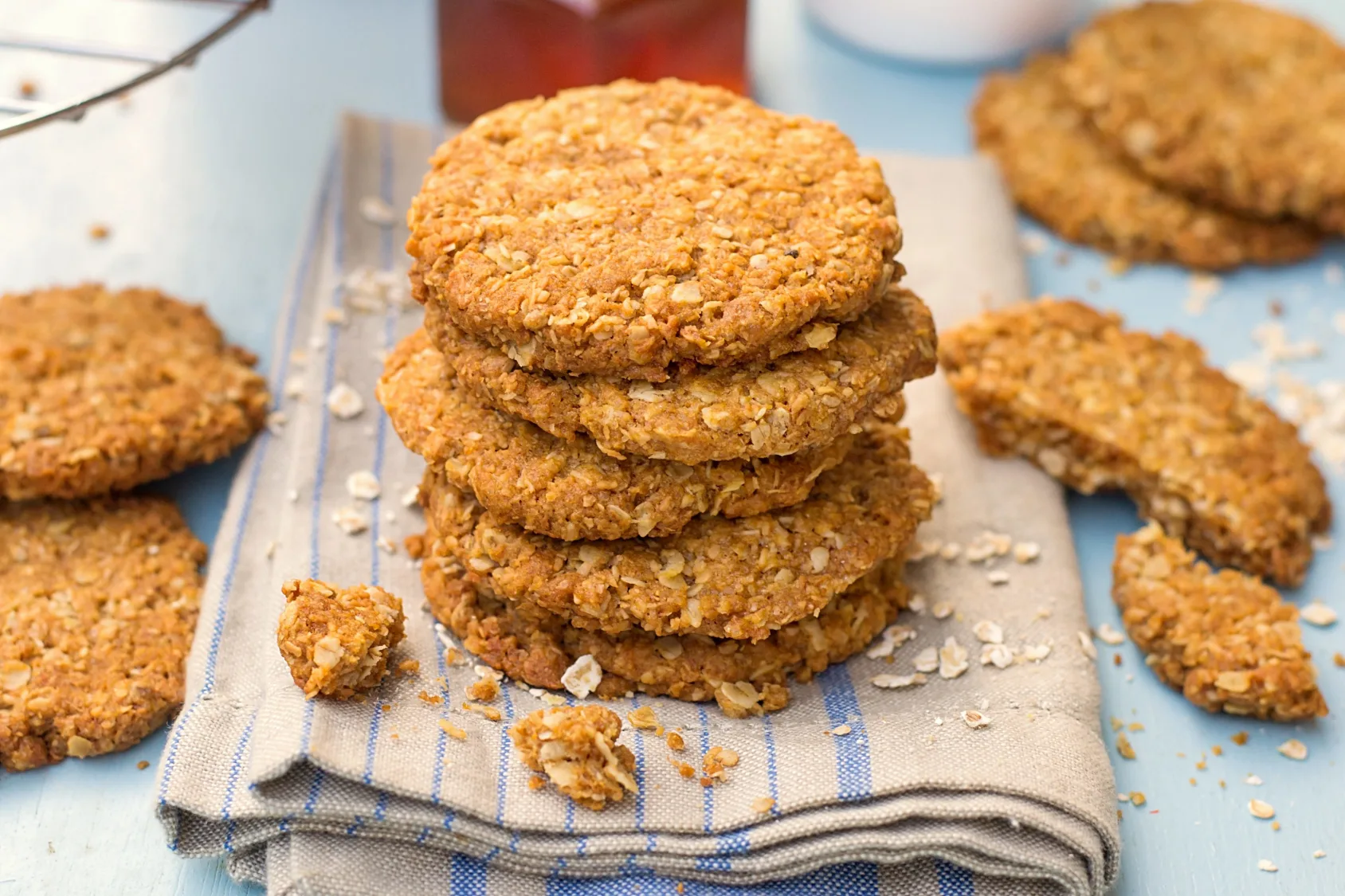
Anzac Biscuits
Traditional Australian biscuits made with oats and golden syrup, originally made during World War I.
Ingredients
- •Rolled oats
- •Flour
- •Coconut
- •Golden syrup
- •Butter
- •Bicarbonate of soda
- •Sugar
Instructions
Mix Dry
Combine oats, flour, coconut, and sugar
Melt
Melt butter and golden syrup
Combine
Mix wet and dry ingredients
Bake
Form into balls and bake until golden
ANZAC biscuits are iconic Australian sweet treats that hold a special place in the nation's culinary heritage. These golden, crispy-yet-chewy biscuits are made from a simple combination of rolled oats, flour, coconut, butter, and the distinctive ingredient - golden syrup, which gives them their characteristic flavor and color.
The history of ANZAC biscuits is deeply rooted in World War I, where they earned their name from the Australian and New Zealand Army Corps (ANZAC). These biscuits were made by women on the home front and sent to soldiers abroad because the ingredients used didn't spoil easily and the biscuits kept well during naval transportation. The absence of eggs in the recipe was deliberate, as eggs were scarce during wartime and would have shortened the biscuits' shelf life.
Making ANZAC biscuits is relatively straightforward, which adds to their charm. The process involves combining the dry ingredients - oats, flour, coconut, and sugar - while melting butter with golden syrup in a separate pan. The magic happens when bicarbonate of soda is mixed with boiling water and added to the butter mixture, creating a foaming reaction. When all ingredients come together, they form a dough that's shaped into small balls and baked until golden. The biscuits typically spread during baking, creating their characteristic flat, crispy-edged appearance.
While the traditional recipe is protected by law in Australia (commercial products must adhere to the original recipe to be called ANZAC biscuits), home bakers often experiment with variations. Some add nuts or dried fruit, while others prefer their biscuits extra chewy or super crispy by adjusting the cooking time. Modern adaptations might include drizzling them with chocolate or using them as a base for dessert slices.
In Australia, these biscuits are enjoyed year-round but are particularly prominent around ANZAC Day (April 25th). They're perfect companions for a cup of tea or coffee and are a popular choice for school lunches, morning teas, or simple afternoon snacks. Many Australians have fond memories of making these biscuits with family members, often using recipes passed down through generations.
From a nutritional perspective, ANZAC biscuits are relatively high in energy due to their butter and golden syrup content. Each biscuit typically contains around 100-150 calories. They're not gluten-free due to the flour and oats, though gluten-free versions using alternative flours do exist. The good news is they contain fiber from the oats and some protein from the coconut. While they're definitely a treat rather than a health food, their historical significance and delicious taste make them a worthy indulgence in moderation.
